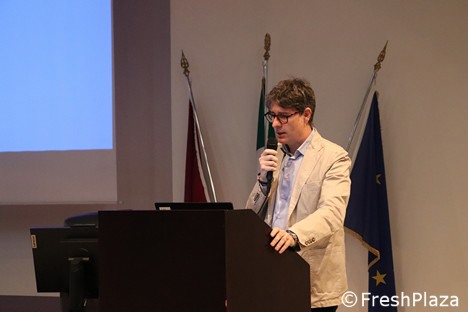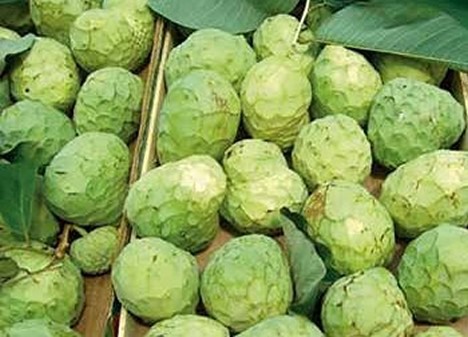The south of Italy is producing an increasing number of tropical species, including annona, also known as cherimoya. FreshPlaza has talked about it with Vittorio Farina, professor at the Department of Agricultural, Food and Forestry Sciences (SAAF) at the University of Palermo. Together with his group of researchers, Farina has recently conducted a study on the shelf-life of cherymoia that was published on Italus Hortus.
 Vittorio Farina
Vittorio Farina
"Annona is part of the Annonaceae family and produces three commercial species: A. cherimola (Cherimoya), A. squamosa and A. atemoya, a hybrid of the two. The former is the most cultivated species both in tropical countries and the Mediterranean, with Spain being the leading global producer boasting approximately 3200 hectares, followed by Peru and Chile. In Italy, 100 hectares are found between Sicily and Calabria. It is still a marginal production, but it is destined to increase, considering the interest show by the market."
"Annona cherimola reaches a height between 5 and 11 meters. The flesh of the fruits is buttery, with a white-creamy color and a delicate fragrant flavor similar to that of pineapples or bananas. Fruits are rich in vitamins C and B6 and constitute a considerable source of thiamine, riboflavin, phenols and flavonoids, yet they are highly perishable with a short shelf-life."
"Among the various postharvest technologies, Modified Atmosphere Packaging - MAP has proven effective in delaying the start of the ripening process. This technique is used to control the composition of the atmosphere surrounding the fruit, slowing down breathing and therefore deterioration."
 Annona cherimola
Annona cherimola
"Our study was one of the first to recreate a procurement chain for Annona cherimola fruits with the objective of introducing it to Italy and the European market by applying the modified atmosphere packaging technology. With the aim of extending the marketability of this product, results are promising thanks to the application of Modified Atmosphere associated with cold storage, which delayed the commercial ripening of fruits enabling a longer procurement chain without altering quality, nutritional values and safety."
"In addition to slowing down the breathing activity of fruits, storage in a modified atmosphere also slows down microbial growth. In addition, the MAP treatment maintains better values in the proximal and vitamin compounds of the control sample until the end of the storage period. Finally, the sensory analysis confirmed that MAP-treated fruits maintained their texture and aroma up to the tenth day of storage."
"We can therefore state that MAP treatments could be a useful solution to prolong the shelf-life of annona fruits and enable Mediterranean producers to expand on medium-distance markets, thus increasing the interest for this fruit as well as the supply of tropical fruits from the Mediterranean."
For further information:
Prof. Vittorio Farina
Departiment of Agricultural, Food and Forestry Sciences (SAAF)
University of Palermo
vittorio.farina@unipa.it
